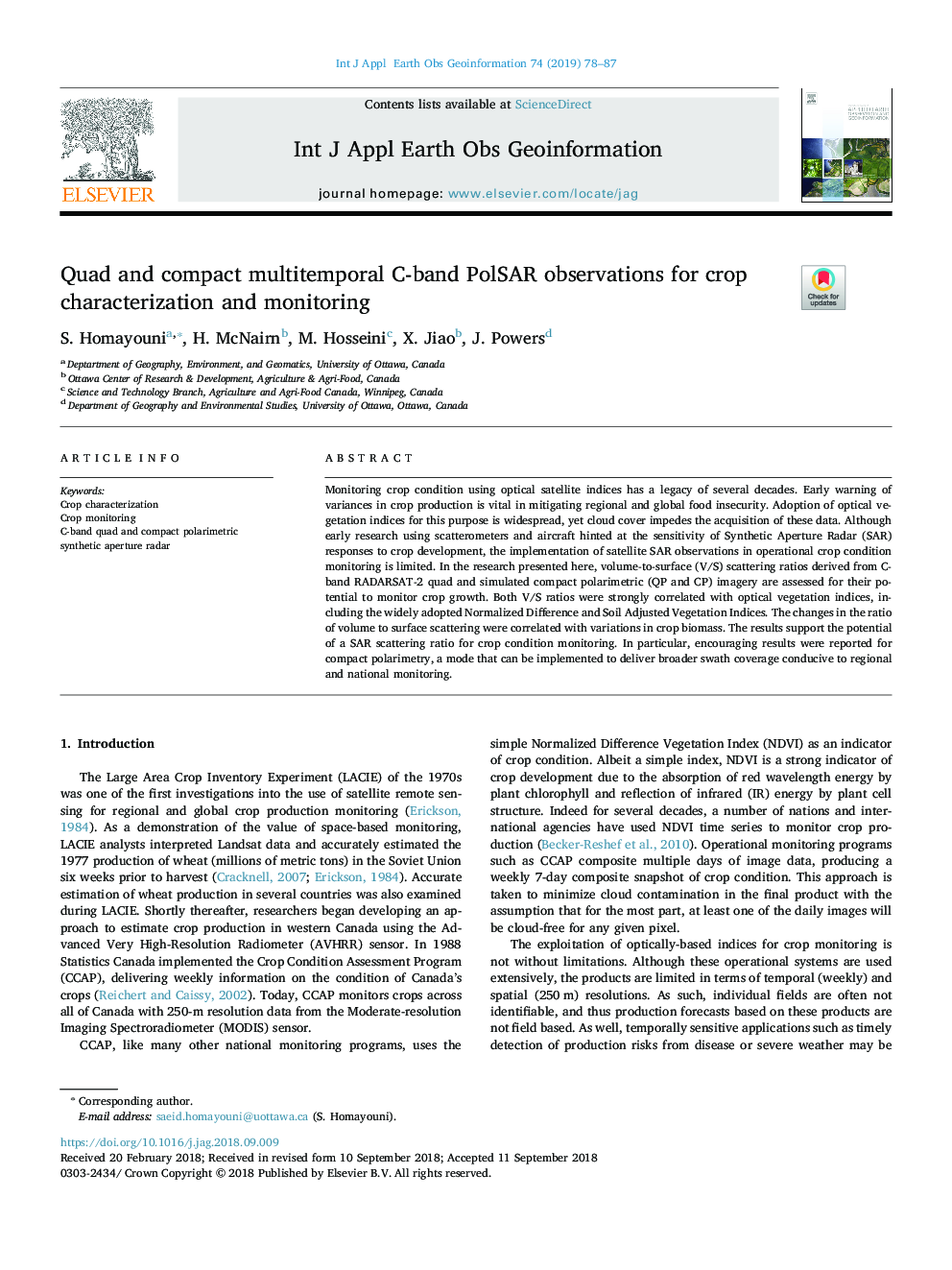| Article ID | Journal | Published Year | Pages | File Type |
|---|---|---|---|---|
| 10149658 | International Journal of Applied Earth Observation and Geoinformation | 2019 | 10 Pages |
Abstract
Monitoring crop condition using optical satellite indices has a legacy of several decades. Early warning of variances in crop production is vital in mitigating regional and global food insecurity. Adoption of optical vegetation indices for this purpose is widespread, yet cloud cover impedes the acquisition of these data. Although early research using scatterometers and aircraft hinted at the sensitivity of Synthetic Aperture Radar (SAR) responses to crop development, the implementation of satellite SAR observations in operational crop condition monitoring is limited. In the research presented here, volume-to-surface (V/S) scattering ratios derived from C-band RADARSAT-2 quad and simulated compact polarimetric (QP and CP) imagery are assessed for their potential to monitor crop growth. Both V/S ratios were strongly correlated with optical vegetation indices, including the widely adopted Normalized Difference and Soil Adjusted Vegetation Indices. The changes in the ratio of volume to surface scattering were correlated with variations in crop biomass. The results support the potential of a SAR scattering ratio for crop condition monitoring. In particular, encouraging results were reported for compact polarimetry, a mode that can be implemented to deliver broader swath coverage conducive to regional and national monitoring.
Keywords
Related Topics
Physical Sciences and Engineering
Earth and Planetary Sciences
Computers in Earth Sciences
Authors
S. Homayouni, H. McNairn, M. Hosseini, X. Jiao, J. Powers,
